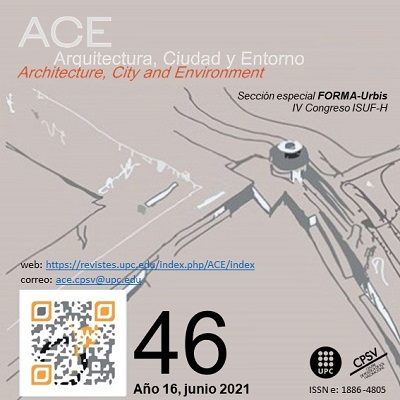Military Properties and New Areas of Centrality. The Case of the Parade Ground in Milan
DOI:
https://doi.org/10.5821/ace.16.46.10366Keywords:
Capitalist city, urban development, urban renewal, urban regenerationAbstract
This paper aims at analysing the city-making process of Milan on the ground of the building-abandonment-regeneration of the Parade Ground from the 19th century onwards. The case of Milan shown that such processes are intimately related to urban and territorial dynamics over time, which impacts, through urban planning instruments, is the creation of a segregated city with a large urban projects-based metropolitan scope. Few studies were carried out on the western European city-making process based on the construction of the primitive Parade Ground, of its successive displacements to other places until its disappearance in the urban and territorial panorama. In the Italian case, specifically in Milan, a specific phenomenon took place. The original Parade Ground dated back to the early 19th century and its change of location has taken place up to three times, which ended in the late 1980s with the definitive disappearance of military activities within the framework of this particular type of settlement. To sum up, this work shows how the management of such large land properties is based on strategies, urban planning, and implementation programmes very similar to each other, although that they are developed in different phases of the urban development process.
Downloads
Published
Issue
Section
License
| INTELECTUAL PROTECTION CRITERIA |
At this moment, it is count with the "Oficina Española de Patentes y Marcas", while global protection it is being processed by the World Intelectual Property Organization (OMPI/WIPO). Nevertheless the International Standard Serial Number Office (ISSN) has given the following numbers ISSN: 1886-4805 (electronic version) and 1887-7052 (paper version). All articles will be peer reviewed, using double blind reviewing. |
| COPYRIGHT |
The article contents and their comments are authors exclusive liability, and do not reflect necessarily the journal editor commitee's opinion. All ACE published works are subject to the following licence CC BY-NC-ND 3.0 ES http://creativecommons.org/licenses/by-nc-nd/3.0/es/ It implies that authors do not hold nor retain the copyright without restrictions but only those included in the licence. |





































